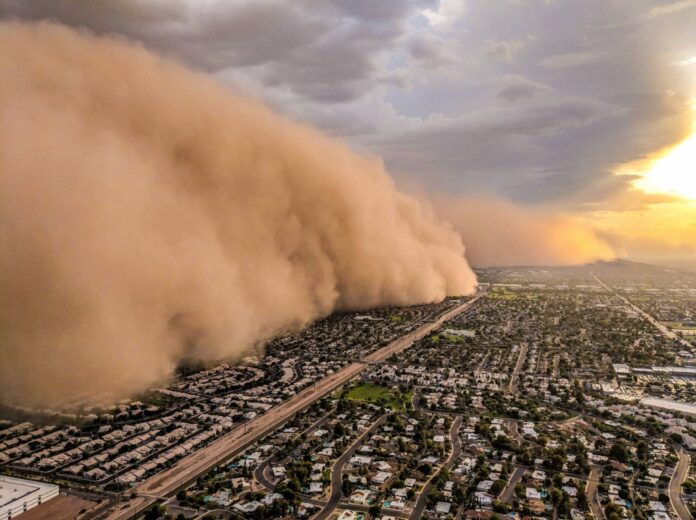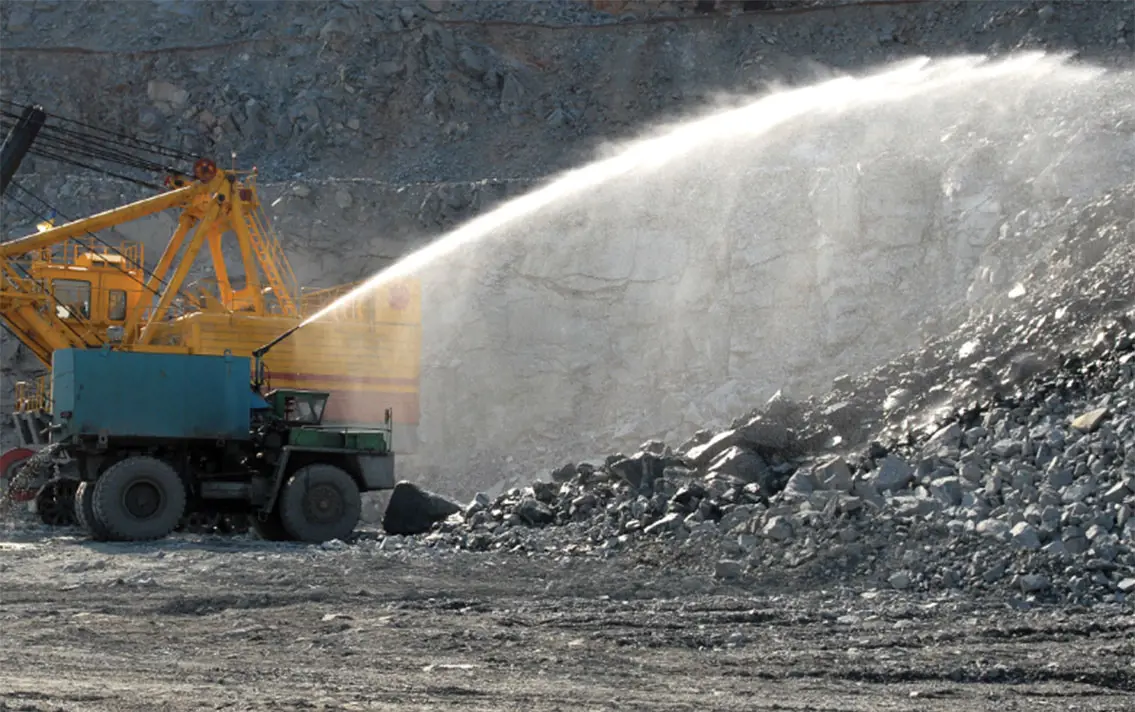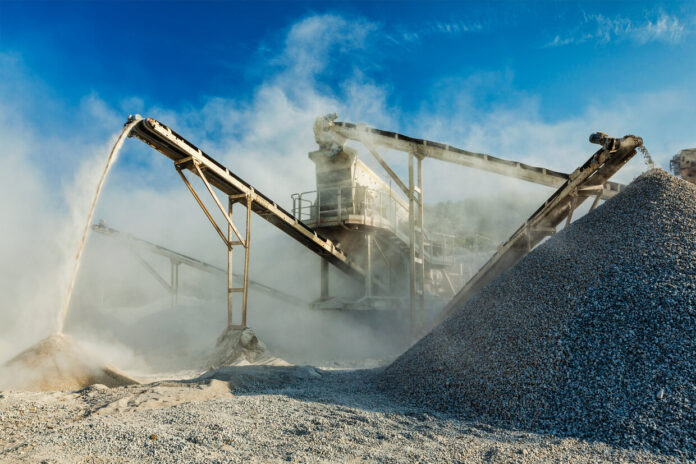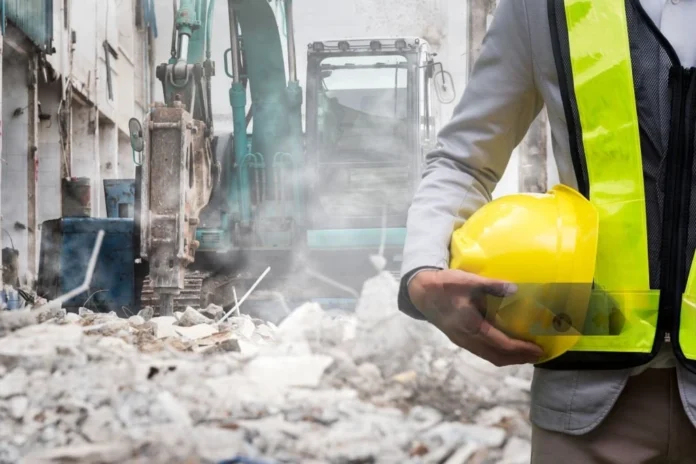Dust suppression is the process of reducing airborne dust particles in industries such as construction, mining, agriculture, and manufacturing. Without proper dust control, fine particles can become a health hazard, damage equipment, and contribute to environmental pollution. Various methods, including water spraying, chemical treatments, and mechanical controls, are used to minimise dust and improve air quality in industrial settings.
In addition to improving air quality, effective dust suppression contributes to better visibility on worksites, reducing the likelihood of accidents and ensuring smoother day-to-day operations. Industries are increasingly recognizing dust management as a key component of workplace safety and environmental stewardship, not just a regulatory requirement.
The Dangers of Uncontrolled Dust


Dust particles, especially fine ones like silica and coal dust, can have severe health implications when inhaled over long periods. Workers exposed to high levels of dust may develop respiratory diseases such as asthma, chronic obstructive pulmonary disease (COPD), and silicosis. In addition to health risks, dust can cause machinery to malfunction, leading to increased maintenance costs and potential downtime. Effective dust suppression is essential for preventing these risks and maintaining a safe working environment.
Moreover, airborne dust can carry hazardous substances, such as heavy metals or pathogens, depending on the industry. For example, in agriculture, dust may contain pesticides or allergens that pose additional threats to human health. Long-term exposure also affects community health, especially when dust drifts from industrial sites into nearby residential areas.
Common Dust Suppression Methods
There are several dust suppression techniques available, depending on the industry and specific dust control needs. Water-based methods, such as sprinklers and misting systems, are widely used to dampen surfaces and prevent dust from becoming airborne. However, in dry conditions, water alone may not be sufficient.
Chemical dust suppressants, including polymers and binding agents, can be applied to soil and other surfaces to trap dust particles for extended periods. These solutions are often used on construction sites, unpaved roads, and mining operations. Mechanical dust suppression methods, such as installing dust extraction systems and enclosing dust-generating activities, can further enhance dust control efforts.
Electrostatic precipitation and fog cannons are also being employed in high-dust environments. These advanced systems use fine particles of water or electrical charges to attract and remove dust from the air. Their efficiency makes them ideal for indoor facilities or areas where traditional methods are impractical.
Dust Suppression in Construction


Construction sites are major sources of dust pollution due to activities like excavation, demolition, and material handling. Without dust suppression, fine particles can spread beyond the worksite, affecting nearby communities and violating environmental regulations. Contractors often use dust suppression measures such as water trucks, dust barriers, and eco-friendly chemical solutions to maintain compliance and reduce health risks.
In urban construction, where proximity to residential zones is high, dust control becomes even more critical. Temporary fencing with dust screens, wheel-washing stations, and frequent site watering schedules are all measures that can be integrated into a site’s daily routine. Some construction companies are even leveraging real-time dust monitoring systems to track particulate levels and respond proactively.
The Role of Dust Suppression in Mining
Mining operations generate large amounts of dust from drilling, blasting, and transporting materials. If not controlled, this dust can lead to serious health concerns for miners and contribute to environmental contamination. Advanced dust suppression techniques, such as foam applications, dust extraction systems, and enclosed conveyor belts, help reduce airborne dust and improve safety in mining environments.
In addition, remote and autonomous mining operations are introducing automated dust control systems that adjust in real-time based on environmental conditions. These technologies not only increase safety but also optimize water and chemical usage, helping to lower operational costs.
Environmental Impact of Dust Suppression
Uncontrolled dust not only affects workers but also has broader environmental consequences. Dust pollution can settle on water sources, contaminate soil, and contribute to poor air quality. Implementing dust suppression measures minimises these impacts and helps companies adhere to environmental regulations. Sustainable dust control solutions, such as biodegradable chemical suppressants and water-efficient misting systems, can further reduce environmental harm.
Green technologies, including the use of recycled water in dust suppression and non-toxic additives, are gaining popularity. Environmental agencies are also tightening dust emission limits, pushing companies toward more sustainable practices. By integrating eco-conscious dust suppression into their broader environmental management plans, businesses can support biodiversity conservation and climate goals.
Choosing the Right Dust Suppression Strategy


Selecting an appropriate dust suppression method depends on factors such as climate, site conditions, and regulatory requirements. Water-based solutions are simple and cost-effective but may require frequent reapplication. Chemical suppressants offer longer-lasting dust control but must be carefully selected to avoid environmental damage. Mechanical systems, such as enclosed conveyors and industrial vacuums, provide efficient dust control but require a higher initial investment.
A hybrid approach, combining multiple dust suppression strategies, is often the most effective. For instance, using chemical treatments in combination with mechanical enclosures can provide long-term control with minimal maintenance. Consulting with environmental engineers or industrial hygienists can help companies choose a tailored solution that balances cost, effectiveness, and sustainability.
Conclusion
Dust suppression is essential for maintaining safe and environmentally responsible industrial operations. By implementing effective dust control strategies, businesses can protect their workers, extend equipment lifespan, and reduce environmental pollution. Investing in the right dust suppression solutions not only ensures regulatory compliance but also enhances workplace safety and operational efficiency.
As industries continue to prioritize sustainability and worker safety, dust suppression will remain a vital component of responsible operational planning. Proactive dust management is no longer optional—it is a critical aspect of modern industry and environmental protection.







